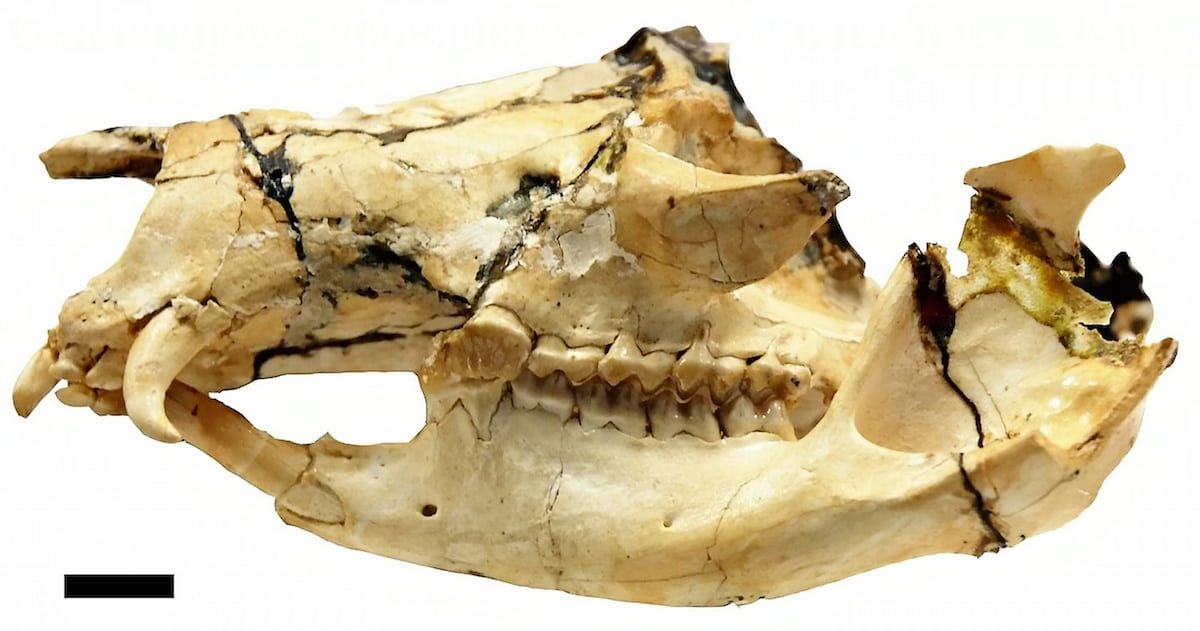
A small fanged kangaroo that once roamed rainforests that covered northern Australia lived longer than previously thought.
The long toothed creature the size of a wallaby lived at least five million years longer than previously thought.
Despite its fearsome canines the fangaroo was a plant eater, did not hop like modern roos and its teeth were just for show to attract mates.
They were thought to have gone extinct about 15 million years ago because of climate change.
But new research into the species diversity and body size showed it persisted to at least 10 million years ago.
And the University of Queensland-led study found the prehistoric species might have competed for resources with ancestors of modern kangaroos.
The findings shed light on the evolution of kangaroos.
The study used Queensland Museum holdings of ancient fossil deposits from the Riversleigh World Heritage Area.
This is Australia’s most famous fossil site where kangaroo fossil evidence goes back as far as 25 million years.
The fanged kangaroos, including the species Balbaroo fangaroo, were about the size of a small wallaby.
PhD student Kaylene Butler at the School of Earth and Environmental Sciences said: “Fanged kangaroos and the potential ancestors of modern kangaroos are both browsers – meaning they ate leaves – and they scurried, but did not hop.
“Northern Queensland was predominantly covered in rainforest when these fanged kangaroos first appear in the fossil record.
“There is a lot of research to be done before we can be sure what their canine teeth were used for but some have suggested they were used to attract potential mates.
“We do know that despite their large canines they were herbivorous (plant eaters).
“We found that fanged kangaroos increased in body size right up until their extinction.”
Ms Butler said the research aimed to fill significant gaps in the understanding of kangaroo evolution, and new fossil finds were helping to bring ancient lineages into focus.
She said: “Currently 21 macropod species are listed as vulnerable or endangered on the International Union for the Conservation of Nature Red List of Threatened Species.”
Understanding when and why kangaroos went extinct in the past could help with understanding what drove extinction of such animals.
Ms Butler said: “Currently, we can only hypothesise as to why balbarids became extinct – the original hypothesis related to events during a change in climate 15 million years ago but the balbarids persisted past that.
“This new finding of their persistence until 10 million years ago means something else must have been at play, such as being outcompeted by other species.”
Last year she discovered two new ancient species of kangaroo, Cookeroo bulwidarri and Cookeroo hortusensis.
https://www.thelondoneconomic.com/news/mammal-lived-biggest-extinction-earths-history-may-hold-key-saving-planet/11/10/
https://www.thelondoneconomic.com/news/image-tiny-insect-living-massive-mushroom-won-amateur-photographer-major-award/16/10/